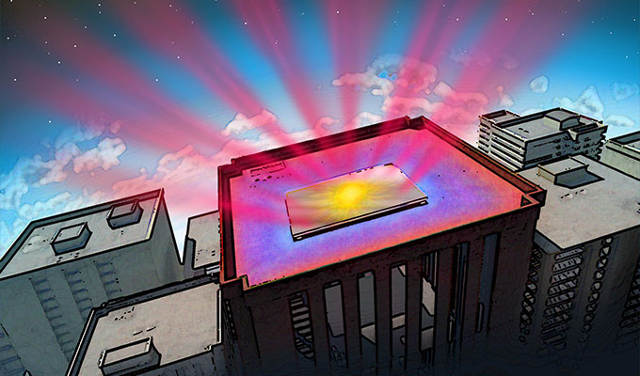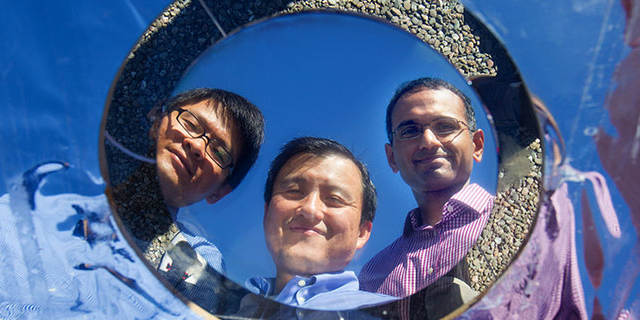An new ultrathin, multilayered coating material paves the way to passively cooled buildings by providing a "one-two punch" approach, to remove heat from within the building whilst reflecting away sunlight.
"We've created something that's a radiator that also happens to be an excellent mirror"
Aaswath Raman

The material, developed by a team of engineers at Stanford, uses a concept they call "photonic radiative cooling". This radiates the building's heat away as infrared light, whilst also acting as an efficient mirror, reflecting 97% of the incident sunlight to reduce incoming heat.
This combination could make buildings around 5˚C cooler, compared to the surrounding atmosphere during the day.
The 1.8µm thick multilayered material is composed of seven layers of hafnium oxide and silicon dioxide over a thin silver layer. These layers are not all the same thickness - the structure is engineered to radiate infrared light at a specific frequency, tuned to ensure it doesn't warm the atmosphere on its way out to space.
The coating could be a great way to reduce the energy demands of large buildings. More generally, the researchers believe it demonstrates the possibility of dumping waste heat into space using infrared radiation.
"Every object that produces heat has to dump that heat into a heat sink. What we've done is to create a way that should allow us to use the coldness of the universe as a heat sink during the day."
Prof. Shanhui Fan

Stanford Professor Shanhui Fan, center, with co-authors Linxiao Zhu, left, and Aaswath Raman, right. The high-tech mirror reflecting their faces beams heat directly into space. (Photo: Norbert von der Groeben)
The technology is currently in a very early stage - the panel the researchers have made is about the size of a pizza, so clearly tests will need to be carried out at larger scales. However, the team seem confident that manufacturing facilities will be able to make panels at the size required.
Another issue is the infrastructure in the building itself, which would need to be designed to channel heat up towards the roof, so that it can be emitted by the panel. This may be technically possible, but retrofitting such a system to existing buildings may prove challenging.
This concept is a great demonstration of the capabilities of nanophotonic materials. The invention has certainly roused a lot of interest - cooling and air conditioning account for a large proportion of the energy used by homes, office buildings and data centers, so any technology which promises to reduce costs in this area is worth keeping an eye on.
Sources
Passive radiative cooling below ambient air temperature under direct sunlight - A. Raman et al., Nature 2014